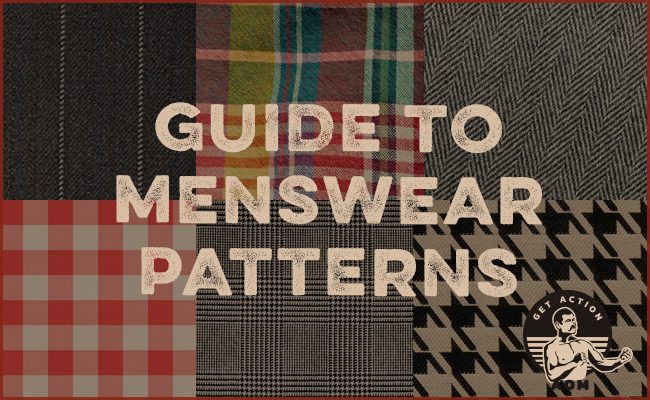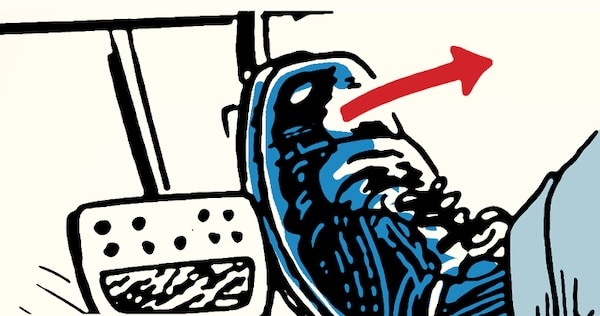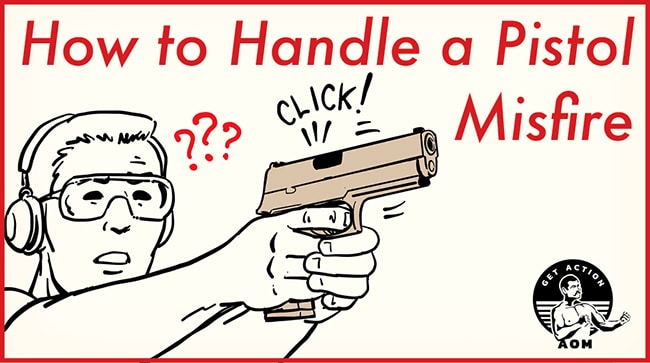
When you’re out plinking with your pistol, you’re likely going to encounter trigger pulls when the gun goes “click” instead of “bang!”
There are three common reasons why your semiautomatic pistol could malfunction. Today, we’re going to show you how to handle them.
General Safety Guidelines
When diagnosing and correcting a pistol malfunction, continue to practice good pistol safety.
Maintain trigger discipline. When diagnosing and correcting a malfunction, keep your trigger finger off the trigger and place it outside the trigger guard. You don’t want to accidentally squeeze the trigger while trying to figure out what’s going wrong with your pistol.
Keep the barrel pointed downrange. One type of misfire you might experience is a hang fire, which is delay between when the firing pin strikes the primer and when the gun fires. You don’t want the barrel pointed at yourself if that’s the case. Keep your barrel pointed downrange.
Type 1 Malfunction
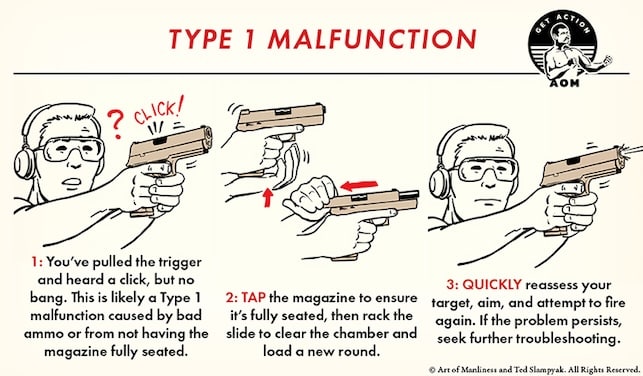
A Type 1 malfunction occurs when you pull the trigger and you hear “click.” It’s the most common malfunction you’ll encounter. A type 1 malfunction is typically caused by one of two things: 1) failure to feed, or 2) failure to fire. Failure to feed can be caused by the magazine not being fully seated; failure to fire can be caused by bad ammo.
The remedy for a Type 1 malfunction is simple: tap, rack, bang.
Type 2 Malfunction: Stovepipe
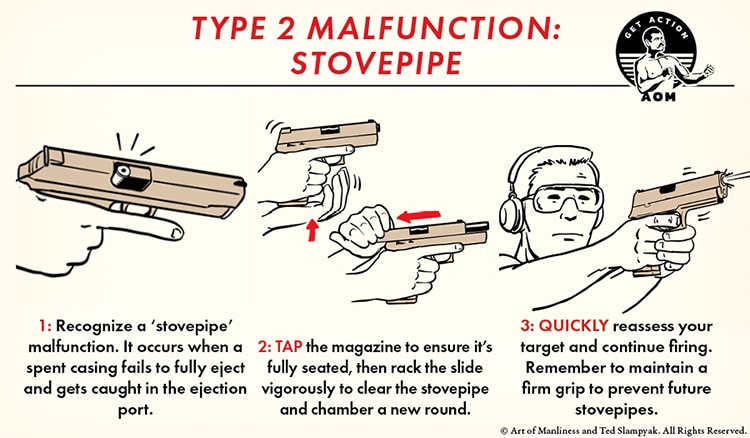
A Type 2 malfunction occurs when an empty casing gets stuck in the ejection port, which prevents a new round from being chambered. The spent casing kind of looks like a stovepipe sticking out of your ejection port, so this type of malfunction is often called a “stovepipe” malfunction. The telltale symptoms of a stovepipe malfunction are a mushy trigger and the lack of the gun going “bang.”
Stovepipe malfunctions typically occur because your grip isn’t firm enough on the pistol, which doesn’t give the slide enough resistance while moving back and forth. If stovepipes happen to you a lot, you may need to work on your pistol grip.
The remedy to a Type 2 Malfunction is the same as a Type 1: tap, rack, bang.
Type 3 Malfunction: Double Feed

A Type 3 malfunction, also known as a double feed, is less common but still important to understand. It occurs when a round attempts to enter the chamber while another round is already there. A sign of a double feed is a mushy trigger when you squeeze it.
If you experience multiple Type 3 malfunctions in a single shooting session, it might be time to have your pistol inspected. A damaged extractor could be the culprit. However, if the issue only happens with one specific magazine, you’ve likely identified the problem: time for a new mag.
The remedy for a Type 3 malfunction is more involved than tap, rack, bang. The extra steps are necessary because there’s pressure built up from the round trying to enter an already occupied chamber, which can cause the magazine to stick.
Practicing How to Handle Pistol Malfunctions
You can practice how to handle the three types of pistol misfires using dummy rounds. Just use the dummy round to set up the different types of malfunctions and practice the clearing methods we discussed above.





